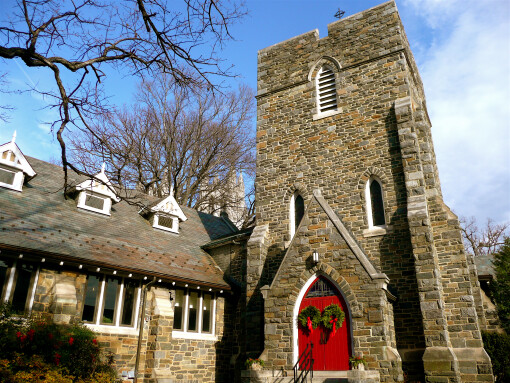White Awake

Series: Pentecost
Speaker: The Rev'd Jim Quigley
Oh boy do we miss you. 26 Weeks. As of today, that’s how long that it’s been. March 8th was the last time we sat side-by-side in silence together, in response to the Gospel, and as a community of faith. That’s a period of time that none of us could have imagined, when so many weeks ago we lamented the fact that we couldn’t gather for Easter services. Eight weeks earlier we had learned that the coronavirus pandemic was going global, but none of us knew that a couple of months later, on May 25th, we would watch the horror of yet another pandemic, this one more local and with roots that reach to the very foundation of our nation. This other pandemic came to North America after having been grafted from a powerful cultural paradigm that existed at the fall of the Roman empire. This other pandemic finds its roots in a class system that today we know as capitalism and from a gender system that was born out of patriarchy. We call it white supremacy.
The virus, call it cultural imperialism, was imported to the colonies and instituted as a means to divide and conquer economically oppressed persons of all colors. Over time, and for advantage, the virus was racialized. The racialization rationalized the oppression of African peoples, not just by the elite but by poor white people as well, who were carefully and calculatingly manipulated into believing that they were white first and poor second; that people of color were threats to their safety and their financial well-being (David Dean - White Awake/Eula Biss). This, of course, was long before there were such things as suburbs. White supremacy exists today as a particularly unique American product that we witness, over and over and over. The deaths of Jacob Blake, Daniel Prude, George Floyd, Brionna Taylor, Atlania Jefferson, Stephon Clark, Botham Jean, Philando Castille, Alton Sterling, Freddie Gray, Eric Garner and Tamir Rice testify to the hold this virus has on our culture. Someone says, “With just a little more violence, and a little more law and order, we can keep it that way.”
Or, we can believe that there’s the possibility of a better way. A better way would be the realization of a new cultural paradigm. This paradigm, this better way, also has roots that go back to the rise and fall of the Roman empire. We might call this new way Christianity, or we might call it something different, something with less baggage, all things and all history considered. We might call this new way Love Supremacy, or perhaps what Michael Curry, the Presiding Bishop of the Episcopal Church calls it - the Way of Love.
The Way of Love is a way of life that is marked by turning toward God - or as we say at St. Alban’s, turning toward what really matters - turning, as the presiding bishop says, like a flower toward the sun. The Way of Love is marked by learning, learning that law and order are summed up in the five words we heard in today’s reading from Paul’s letter to the Romans, five words which constitute the most consistent message in all of Holy Scripture: Loving your neighbor as yourself. The Way of Love is marked by praying, praying for those we love and praying for our enemies; the enemies of love. The Way of Love is marked by worship, by taking time to express reverence for all that we have been given - for the gift of life, for the wonder of creation, for the beauty of the world, for minds to think and hearts to love. The Way of Love is marked by blessing. Blessing because we have been blessed, and waking and beginning every day with one question, how can I be a blessing in this Way, in this day, in this moment? And finally, the Way of Love is marked by going, by going into the world hoping to touch someone’s life, to forgive the way Jesus forgave, to give the way Jesus gave; to do justice, love mercy and walk humbly with God.
I hope the Way of Love sounds like a reasonable alternative to you, and we might end there, but let’s not. For those of us hearing this as white people, if you are with me so far, if you are hearing a history that rings true to you, you might be at the stage that blogger Tad Hargrave calls Acceptance. Coming to acceptance of our racist history as white people in North America means that we see and understand racism’s history and what it means about us as white people, and also that we stop making the issue about us - [by] hating ourselves, hating our ancestors or hating anybody for that matter. Understanding the history gives us the capacity to see what our place in that story might be. Acceptance means that we can be finally be useful in doing something about it because we finally understand what ‘it’ is.
And doing something useful would be, as Time Wise wrote in 2006, to “pathologize whiteness and institutional white supremacy.” “To make white culture - the dominant cultural form on the planet today - the problem, not the enemy, not only of folks of color but of white [people] too. [To] demonstrate that white supremacy is not only homicidal to the black and brown but suicidal to those of us who are members of the club that created it.” On the bright side, as Wise puts it, “we can always take heart in the realization that former white empires, imbued with every bit as much of a messianic and self-assured mentality of supremacy [as ours], ultimately crumbled. On the far less bright side, we must recall that the end of those empires came with a lot of blood, whether spilled by King Leopold, Hitler, Stalin or the South African Boers. We must do all in our power to make clear the dangers [of white supremacy] to ourselves and to others… attacking it from within, not because we hate America but because we love ourselves, our children, and the children of the world more… and because we are tired of [someone telling us to be afraid].” As people of the Way, as love supremacists, we might add that we will do all our power to end racism in America because every person of every color is a child of God, a blessing to us and blessing in God’s world.
As Paul wrote to the Romans, “You know what time it is, how now it is the moment for us to wake from sleep.” It is time, brothers and sisters, as Christians, as people of the Way of love, as white Americans, and perhaps most importantly as human beings, to be White Awake (David Dean). To come to terms with our past and forge the radical path of equality and justice for all of God’s children, to forge the Way of Jesus’ Love in our land.
Amen
A Ritual to Read to Each Other, by William E. Stafford:
If you don't know the kind of person I am
and I don't know the kind of person you are
a pattern that others made may prevail in the world
and following the wrong god home we may miss our star.
For there is many a small betrayal in the mind,
a shrug that lets the fragile sequence break
sending with shouts the horrible errors of childhood
storming out to play through the broken dike.
And as elephants parade holding each elephant's tail,
but if one wanders the circus won't find the park,
I call it cruel and maybe the root of all cruelty
to know what occurs but not recognize the fact.
And so I appeal to a voice, to something shadowy,
a remote important region in all who talk:
though we could fool each other, we should consider—
lest the parade of our mutual life get lost in the dark.
For it is important that awake people be awake,
or a breaking line may discourage them back to sleep;
the signals we give — yes or no, or maybe —
should be clear: the darkness around us is deep.
William Stafford, "A Ritual to Read to Each Other" from The Way It Is: New and Selected Poems. Copyright © 1998 by William Stafford. Reprinted by permission of Graywolf Press.
 Welcome to St. Alban’s Church! Every Sunday, and most days in between, people gather in this place to worship, to learn, to grow, to share the joys and struggles of our lives, and to seek God’s grace in the midst of our lives. We do not come because we have it all figured out, but because we are seeking light on the way. We come as we are and welcome one another.
Welcome to St. Alban’s Church! Every Sunday, and most days in between, people gather in this place to worship, to learn, to grow, to share the joys and struggles of our lives, and to seek God’s grace in the midst of our lives. We do not come because we have it all figured out, but because we are seeking light on the way. We come as we are and welcome one another.

